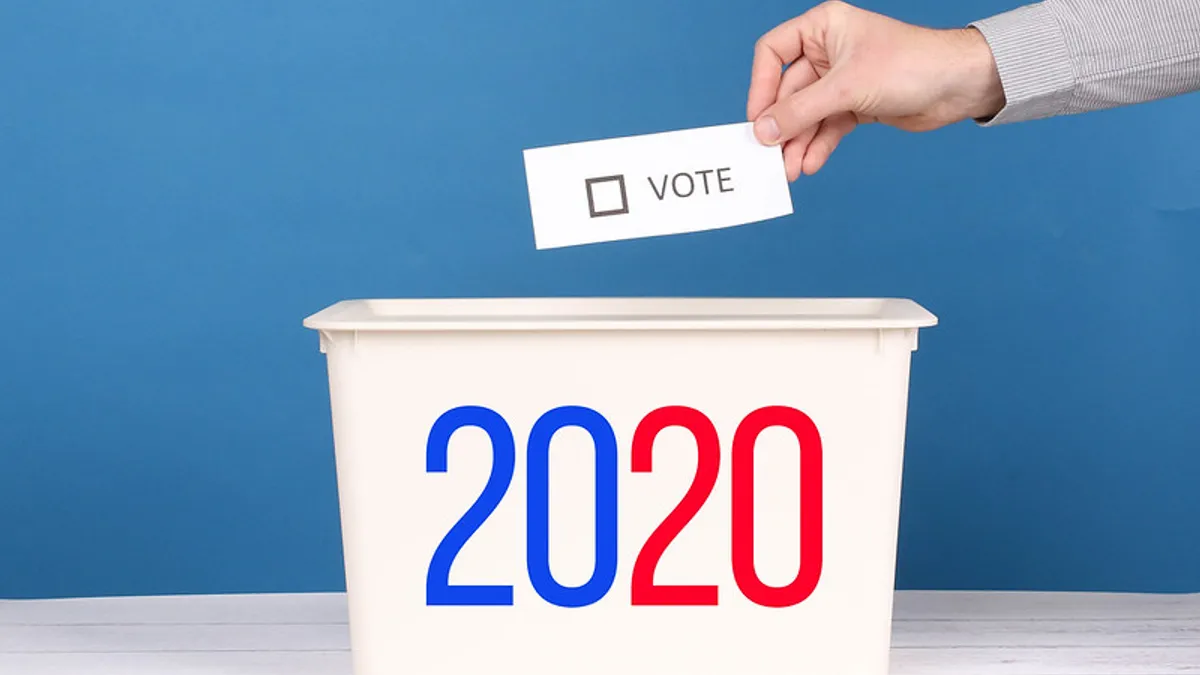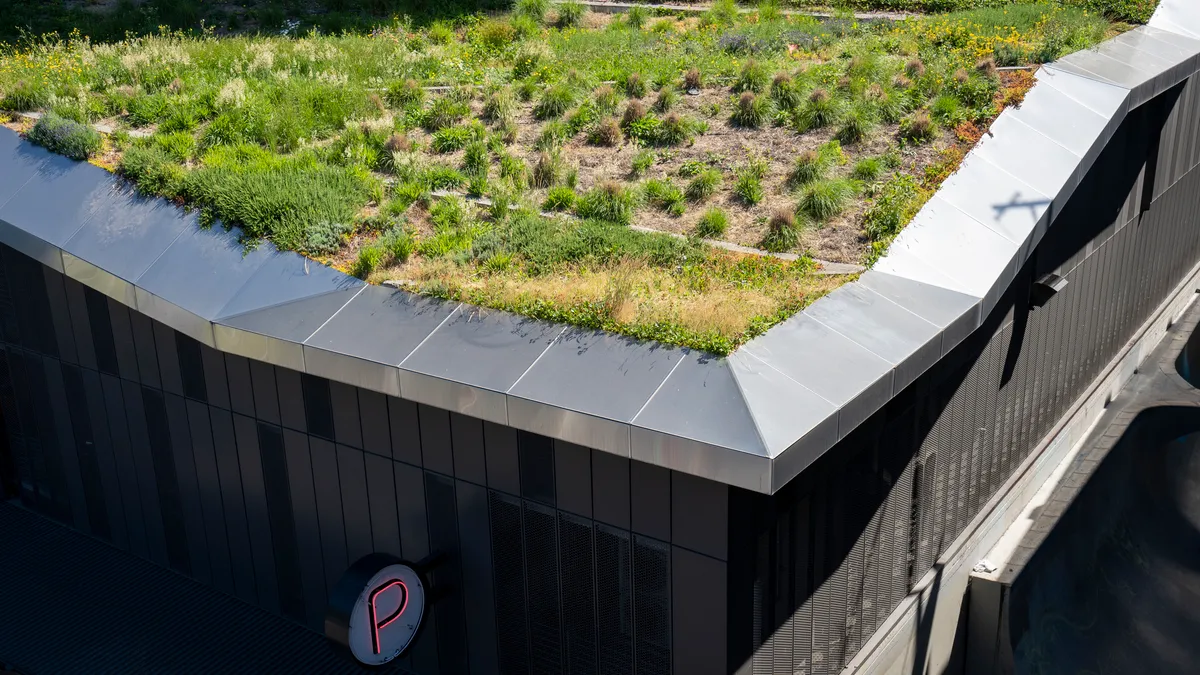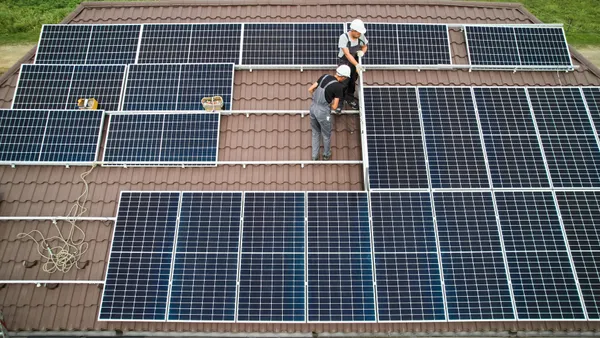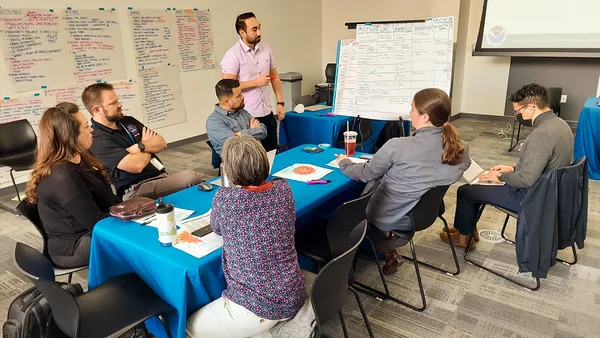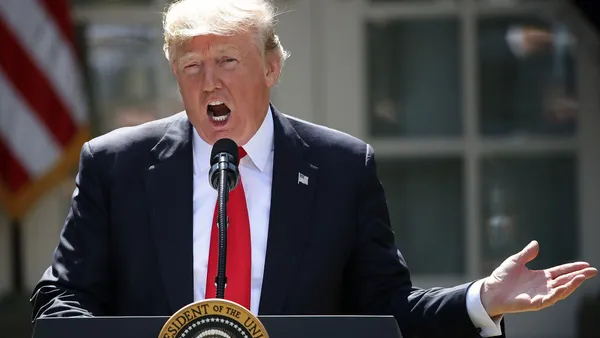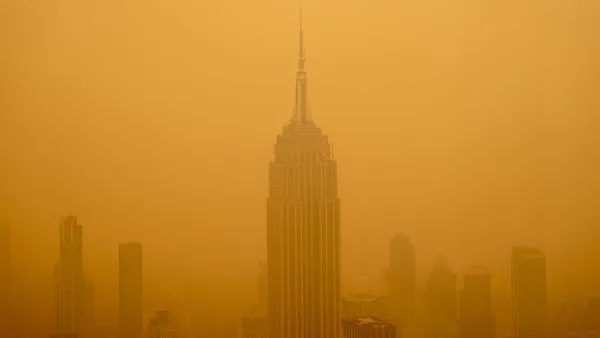The District of Columbia and nine states — Idaho, Indiana, Iowa, Maryland, Montana, New Mexico, Pennsylvania, Rhode Island and South Dakota — hosted historic primary elections on Tuesday, June 2, an Election Day marked by a pandemic and national unrest over issues of racial injustice.
Many state and local governments urged a mail-in voting system due to risks of the coronavirus. While remaining ballots are counted and election results roll in, we've rounded up five notable Election Day trends, events and outcomes.
1. Communities of color see consolidated number of polling places
Voters nationwide saw the number of polling places consolidated as officials attempted to curb the spread of coronavirus.
Some states allowed local governments to decide how many polling places would be made available to voters — a choice that seems to have created an inequitable voting experience for some, according to FiveThirtyEight.
Marion County, IN, home to Indianapolis and 43% of the state’s non-Hispanic Black population, opened just 22 polling places compared to its usual 250-plus locations. Meanwhile Hamilton County, IN, which has the highest per-capita median income across the state, was proceeded with business-as-usual, opening 125 of its typical polling locations.
In Philadelphia, home to a majority of minority groups, the city consolidated 831 polling places to 190 locations. That number serves as a stark contrast to nearby White-majority Bucks County, which did not plan to close any of its polling sites.
2. Number of mail-in ballot requests split along party lines
Absentee voting was largely the norm this Election Day, but the majority of mail-in ballots appear to be have been requested by Democratic voters, particularly in Pennsylvania, Iowa, Indiana and New Mexico, according to the New York Times.
In fact, 70% of the 1.5 million people who requested mail-in ballots in Pennsylvania were Democrats. Likewise, 71% of mail-in ballots were from Democrats in New Mexico and 56% of mail-in ballots were from Democrats in Iowa.
3. Washington, DC mayor dubs city's election day a failure
The District encouraged residents to mail in their votes, but many voters didn’t receive requested absentee ballots and were forced instead to vote in-person — often standing in long lines past the District-wide 7 p.m. curfew imposed amid protests.
The city opened 20 voting centers instead of its typical location-per-precinct (143 locations), according to The Washington Post. Only 10 voters were permitted inside at a time as polling places tried to maintain social distancing.
The 7 p.m. curfew also appeared to add some confusion to the mix. One voter shared on Twitter that law enforcement officers incorrectly told residents to go home if they were still waiting to vote past the curfew.
At the Hardy Middle School Ward 2 voting station and a cop car just passed by, announcing that everyone must go home because of the curfew.
— Sherene Joseph (@ShereneJoseph) June 2, 2020
Mayor Muriel Bowser said the primary Election Day was a failure.
4. Baltimore mayoral race still too close to call
Baltimore is still waiting to confirm its winning mayoral candidate as in-person and outstanding mail-in ballots are counted. Of the approximately 76,000 votes counted early Wednesday morning, former Mayor Sheila Dixon appears to be in the lead, followed by City Council President Brandon Scott.
The mayoral race included over 20 Democratic candidates, with crime listed as a top concern among voters. Smart Cities Dive spoke with Scott in April about the city's use of surveillance planes to capture images intended to help solve crimes and investigations.
Scott opposed the speedy adoption of the planes amid the pandemic. "We don’t have time to be anyone's guinea pigs," he said at the time. "We should be laser focused on technology that we know works."
5. West, Midwest regions see record-breaking participation
Iowa’s turnout for the June primary saw over 500,000 ballots cast, with the previous record set in 1994 at 449,490 ballots.
Missoula, MT also saw record-breaking voter turnout, receiving 61% of the over 71,000 mail-in ballots sent to residents. And South Dakota's Woodbury County saw unprecedented voter turnout, with about 13,000 absentee ballots cast and 3,400 individuals who voted in-person.



